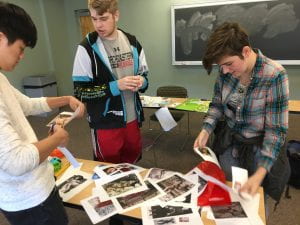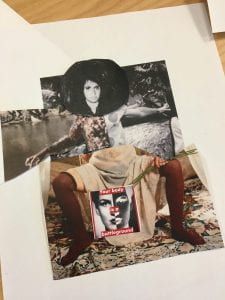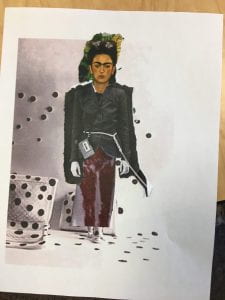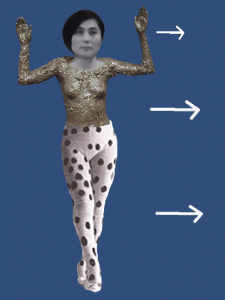For my game featuring appropriation I chose to make a dress up game utilizing images from famous feminist artworks. While I chose the majority of my images based on the work’s expression of the artist’s own self-expression and relation to gender. overall I am very happy with the chosen works, especially with how harshly they contradict the traditional dress up game with the common inclusion of nudity or blood.



Initially I started with a physical version, scaling all of the source images to be comparably to scale, and had my classmates cut and clue parts of the images to create their own feminist artist. I was surprised with how well this activity turned out, with the flexibility of the physical medium offering unique combinations like different arms or feet that I hadn’t thought of for the digital version. I also love how the final products include the background of the various images, setting the characters in a scene. Initially I was conflicted on whether or not I should choose to cut the pieces out before hand, but found the physical act of cutting and gluing the collage to be powerful.



For the digital version of the game I chose to use unity, and make a relatively simple character creation in which you could customize the head, torso, and legs of your character. While I love the immediacy of seeing the different combinations, in the future I hope to continue adding to the game to polish it, eventually adding a submit screen that would show the original works behind the parts you chose and a brief explanation of each work and its artist respectively.
Overall I took a lot of inspiration from a number of different Dada artists and their appropriation. Hannah Höch was particularly inspirational. I loved the aesthetic of Cut with the Dada Kitchen Knife through the Last Weimar Beer-Belly Cultural Epoch in Germany in addition to The Beautiful Girl being an amazing feminist collage. Max Ernst’s Sacred Conversations, Man Ray’s Coat Stand, George Grosz and John Heartfield’s The Middle-Class Philistine Heartfield Gone Wild, and Marcel Duchamp’s Nude Descending a Staircase, No 2 all served as great examples of the abstraction of the female form using collage and assembly, in addition to the question of the objectification of the female form. Overall while the combination of the individual works is up to the participant, I hope the resource of works provided allow for some kind of education or curiosity about the artists behind them and all the work that they have created.
